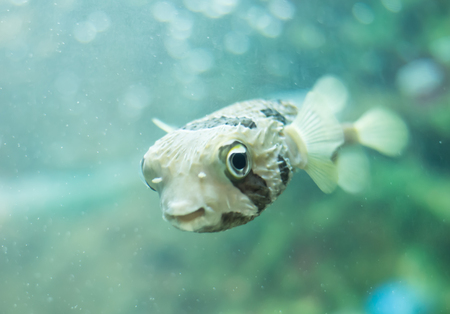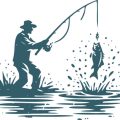Setting Sail: Early Beginnings of Cod Fishing in Britain
If you’ve ever stood on a windswept British quay, watching the boats bobbing on the swell, it’s easy to feel the echoes of centuries past. The story of cod fishing in Britain’s seas begins long before modern trawlers and weather apps—back when hardy folk from historic coastal communities first eyed the promise of rich waters. In those early days, cod wasn’t just a tasty treat for the table; it was a lifeline, shaping villages and livelihoods along rugged coastlines from Cornwall up to Shetland.
Let’s take a step back to those origins. Early records tell us that by the Middle Ages, communities such as Whitby, Grimsby, and Lowestoft were already venturing out with simple wooden boats, braving the unpredictable North Sea. These pioneers relied on experience passed down through generations—knowledge of tides, weather patterns, and where the cod liked to gather. It wasn’t only about catching fish; it was about survival and forging an identity tied to the sea.
To give you a sense of how cod fishing spread across Britain’s coasts, here’s a handy table highlighting some key historic communities and their roles:
| Region | Historic Fishing Community | Early Role in Cod Fishing |
|---|---|---|
| North East England | Whitby | Pioneered salt-curing and distant-water voyages |
| East Coast | Grimsby | Became a hub for local and international cod trade |
| South West England | Looe & Newlyn | Sustained local diets with inshore cod catches |
| Shetland Islands | Lerwick & Out Skerries | Tapped into rich northern waters for seasonal harvests |
For these communities, early ventures onto local waters weren’t just business—they laid down traditions and unwritten codes that still echo today. Every trip out was a gamble against the elements, but as any old hand will tell you down at the harbour: fortune favours those who respect both the sea and its heritage.
2. Golden Age and Working Boats
Step back to the golden age of cod fishing, a time when British coastal towns thrived on the bustling activity of their harbours. The clatter of crates, shouts from weathered fishermen, and the tang of salt in the air made for a truly iconic scene around the North Sea and beyond. From Hull to Grimsby, these ports became legendary as cod-laden trawlers returned with their prized catch, feeding both the local economy and the nation’s growing appetite for fish suppers.
The backbone of this industry was undoubtedly the working boats and their hardy crews. Traditional British trawlers, built to withstand stormy seas and long voyages, became a symbol of our maritime prowess. These vessels evolved over time, each era introducing improvements in design and technology that made hauls bigger and journeys safer.
| Trawler Type | Era | Main Features |
|---|---|---|
| Sailing Smacks | 1800s | Wooden hulls, wind-powered, small crew |
| Steam Trawlers | Late 19th – Early 20th Century | Steam engines, larger holds, longer range |
| Diesel Trawlers | Mid 20th Century Onwards | Efficient engines, modern navigation, improved safety |
It wasn’t just about the boats themselves—life at sea was tough and demanded grit. The crews were often away for weeks at a time, braving unpredictable weather and long hours hauling nets brimming with cod. Yet there was a palpable sense of camaraderie among these fishermen; they shared tales over mugs of strong tea and kept spirits high through songs and banter as they worked together under the ever-changing British skies.

3. The Cultural Catch: Cod in British Life
When we talk about cod fishing, it’s not just about the boats and nets – it’s about how this iconic fish has seeped into the very fabric of British culture. Across the UK, cod isn’t just a species; it’s a tradition, a comfort food, and for many, a way of life that conjures up memories of childhood trips to the seaside or that irresistible Friday night chippy tea. From bustling harbours to sleepy coastal villages, cod has left its mark on everything from local economies to national identity.
The Chippy Tea: A National Institution
No discussion of cod in Britain would be complete without mentioning fish and chips. This classic dish became popular in the 19th century as working-class families sought hearty, affordable meals. Cod was the star of the show, prized for its flaky texture and mild flavour. Even today, a proper chippy tea is almost a rite of passage – whether enjoyed with mushy peas, lashings of vinegar, or wrapped in yesterday’s newspaper for that authentic touch.
| Region | Local Twist on Cod |
|---|---|
| Yorkshire | Battered cod with scraps (bits of leftover batter) |
| Lancashire | Cod with mushy peas and gravy |
| Scotland | Crispy cod supper with salt & sauce |
| Cornwall | Cornish new potatoes alongside fried cod |
Seaside Towns Shaped by Cod
The legacy of cod fishing is etched along Britain’s coastlines. Towns like Grimsby, Whitby, and Lowestoft once thrived as major fishing ports, their fortunes rising and falling with each season’s catch. Cod brought jobs not only for fishermen but also for shipbuilders, smokehouse workers, and market traders. The rhythms of daily life – from dawn departures to lively quayside auctions – revolved around the tides and hauls of cod. Even today, you’ll find museums, festivals, and plaques celebrating these towns’ maritime past.
Cultural Impact Beyond the Plate
Cod has also inspired art, literature, and even language across Britain. Phrases like “plenty more fish in the sea” echo our seafaring heritage. Songs sung by trawlermen tell tales of danger and camaraderie at sea. Local pubs display weathered photographs of legendary catches from years gone by. All these threads weave together a story where cod is much more than a meal – it’s part of who we are.
4. Tales from the Trawlermen
If you really want to get a sense of the cod fishing heritage around Britain’s coast, you need to listen to the voices that have lived it — the trawlermen. From Grimsby to Peterhead, these hardy folk have stories that would make your hair stand on end or have you laughing over a cuppa in the harbour cafe. The camaraderie among crews is legendary; many an old hand will tell you about nights spent riding out North Sea storms, sharing a flask of tea and a joke while keeping one eye on the winch. Here are some snippets and common themes from real-life British fishers, past and present:
| Era | Common Experiences | Fishers Quote |
|---|---|---|
| 1950s–1970s | Manual hauling, close-knit crews, no modern tech | “We relied on our wits and each other — every trip could be your last.” |
| 1980s–2000s | Introduction of sonar, changes in quotas, foreign competition | “It was tough seeing the docks go quiet as rules changed, but we stuck together.” |
| Present Day | Sustainability concerns, modern gear, new generation learning the ropes | “Now it’s about balance — keeping traditions alive while looking after the sea.” |
Beyond the facts and figures, there’s a spirit to British cod fishing — a unique blend of pride, resilience, and banter. When storms brew up off the Dogger Bank or when a net comes up heavy with silver cod, you’ll find fishers swapping tales of ‘the one that got away’ or remembering mates lost to the waves. There’s even a tradition of sharing superstitions: some won’t whistle aboard for fear it’ll call up a gale, others insist on a lucky mug for their tea. These stories, handed down through generations, capture not just the challenges faced at sea but also the joys and friendships forged in salt spray and hard graft.
5. Changing Tides: Conservation and Modern Cod Fishing
If you’ve ever chatted to an old-timer on a British pier or joined a seasoned skipper out in the North Sea, you’ll know that cod fishing today looks quite different from the golden age of trawlers and heaving nets. Over the past century, our methods have evolved – sometimes for the better, sometimes not so much. The introduction of industrial trawling after World War II dramatically increased catches, but this progress came at a cost. By the late 20th century, cod stocks in British waters were dangerously low, prompting widespread concern among anglers and conservationists alike.
The Impact of Overfishing
With so many boats chasing fewer fish, the consequences soon became clear. Overfishing led to population crashes in several key areas, most famously the North Sea and around the Grand Banks off Newfoundland (once a favourite haunt for British fishing fleets). As catches dwindled, both commercial crews and hobby anglers noticed smaller fish and fewer trophy specimens coming ashore. It was a wake-up call – we couldn’t keep taking without giving something back.
Fishing Methods: Then & Now
| Traditional Methods | Modern Approaches |
|---|---|
| Hand lines and longlines Small-scale trawlers Seasonal fishing |
Industrial trawling Sophisticated sonar technology Tighter regulations & quotas |
While modern technology makes it easier to locate shoals of cod, strict rules now govern what can be landed. These days, if you’re heading out from Grimsby or Whitby, you’ll need to keep a close eye on minimum size limits, bag restrictions, and closed seasons designed to let stocks recover.
Conservation Efforts in Action
The response to declining cod numbers has been varied and often hotly debated down at local angling clubs. The UK government, along with international bodies like ICES (International Council for the Exploration of the Sea), has introduced measures such as:
- Catch quotas and landing limits
- No-fishing zones during spawning periods
- Encouragement of selective gear to reduce bycatch
Many British anglers have also embraced ‘catch and release’, especially when targeting larger breeding fish. There’s a growing sense that if we want future generations to enjoy pulling up a plump cod from our chilly waters, we need to fish smarter – not just harder.
This shift hasn’t been easy for everyone. Some traditional communities have struggled with tighter rules, while others see it as essential stewardship of our maritime heritage. Either way, it’s clear that preserving Britain’s cod stocks is now as much about respect for the sea as it is about landing that perfect fillet for supper.
6. Legacy Ashore: Museums, Monuments, and Memories
The story of cod fishing in Britain isn’t just one told out at sea—it’s very much alive on land as well. From bustling harbours to quiet seaside villages, the heritage of cod fishing has found a permanent home in our collective memory, carefully preserved by museums, monuments, and the everyday stories passed down through generations.
Museums: Guardians of Maritime Heritage
Across Britain’s coastlines, you’ll find an impressive collection of maritime museums dedicated to preserving the legacy of cod fishing. These institutions not only display historic trawlers and fishing gear but also bring to life the voices and experiences of those who worked the waves. For example, the Hull Maritime Museum and Grimsby Fishing Heritage Centre offer hands-on exhibits that let visitors step into the boots of a North Sea fisherman—smelling the salt, hearing the cries of gulls, and feeling the weight of history on their shoulders.
Key Cod Fishing Museums in Britain
| Museum Name | Location | Highlight Exhibit |
|---|---|---|
| Hull Maritime Museum | Hull, East Yorkshire | Historic trawler models & cod wars exhibits |
| Grimsby Fishing Heritage Centre | Grimsby, Lincolnshire | Interactive trawler tours & fishermen’s tales |
| Scottish Fisheries Museum | Anstruther, Fife | Coding industry artefacts & local oral histories |
Monuments: Standing Stones to Seafaring Spirit
You can’t walk along many British quaysides without spotting a monument or plaque commemorating the bravery and resilience of cod fishers. Whether it’s the striking Fishermen’s Memorial in Hull or weathered statues along Scottish harbours, these landmarks keep alive the memory of those lost at sea and celebrate the communities built on cod. They serve as both places for reflection and reminders of how closely our towns and cities are tied to the fortunes of the sea.
Memories in Coastal Communities
Beyond official memorials and museum walls, it’s in the pubs, family kitchens, and local events where cod fishing’s heritage truly thrives. Annual festivals like Whitby Fish & Ships Festival or folk evenings filled with sea shanties ensure these traditions aren’t forgotten. Locals share anecdotes about legendary skippers or record-breaking catches over pints of ale—a living testament to how cod fishing shaped identity, language, and even humour along Britain’s shores.
The Living Legacy Table: How Cod Fishing Shapes Today’s Communities
| Community Practice | Description |
|---|---|
| Seafood Festivals | Culinary celebrations highlighting traditional cod dishes & sustainable seafood awareness. |
| Storytelling Nights | Events where old timers recount tales from “the Cod Wars” or epic storms at sea. |
| Cultural Workshops | Knot-tying lessons, net-mending demos, and boat-building for younger generations. |
| Shrine Maintenance | Locals maintaining fishermen’s chapels or memorial plaques with flowers and messages. |
This patchwork of museums, monuments, and memories ensures that while today’s cod fisheries face new challenges, their rich heritage remains firmly rooted ashore—cherished by both locals and visitors alike. Each visit to a coastal town or museum is a chance to connect with this proud tradition, keeping its spirit very much alive for future generations.


